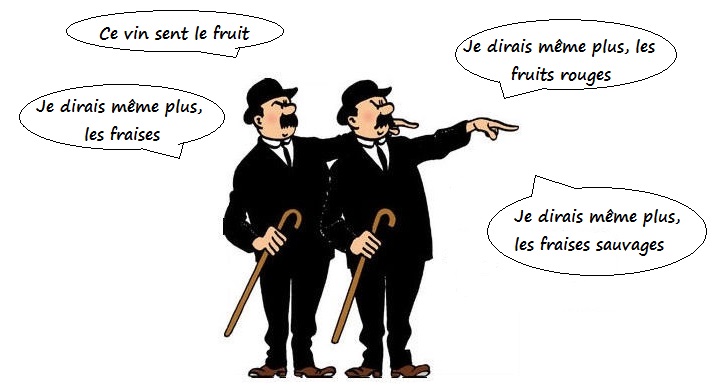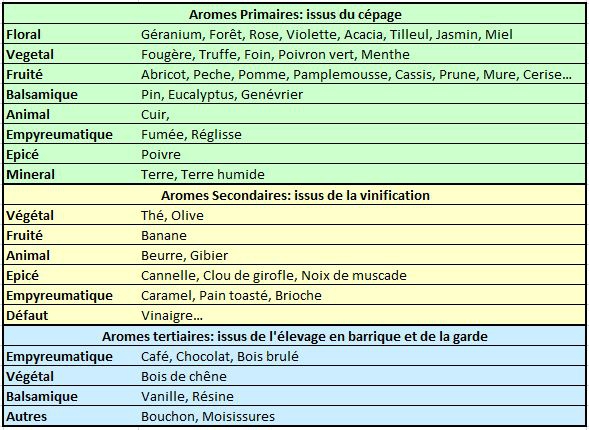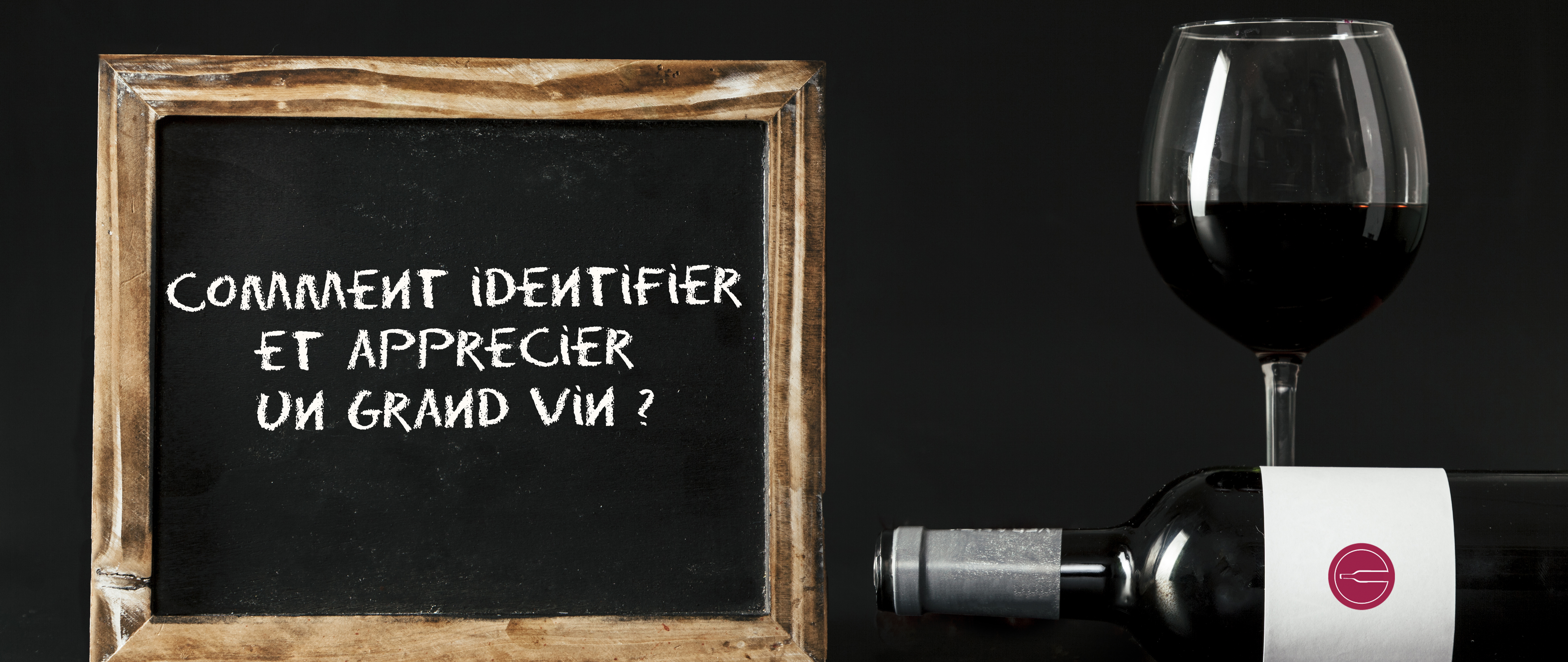Wine is the product with the most varied range of aromas. Not everyone has the same sensory acuity. Educating the senses requires training. "We're taught to read, write and count. Why can't we learn to smell? Jean Lenoira researcher specializing in the study of odors.
Wine flavour and bouquet
Chemically speaking, wine is made up of water, alcohol, acids and acid derivatives. These basic substances bind together, and the fruit of these various associations constitutes the wine's aroma. Tasting is the only way to really get to know a wine.

Why do we associate certain wine smells with a particular aroma?
Olfactory sensations Bouquet and flavor are the main organoleptic characteristics of wine. Aldehydes, esters and fatty acids determine a wine's bouquet. However, only a tiny proportion of these odoriferous compounds are perceptible: these are precisely the volatile aromas. From a chemical point of view, around 800 of these aromatic compounds have been identified. The presence of the methoxyisobutyl pyrazine molecule confers to Val de Loirelike Chinon, a powerful and very characteristic green bell pepper aroma. In reality, this aroma is a purely subjective association, as the corresponding molecule has not been identified in peppers. Visit vieux bourgognes are recognizable by their fruity plum aroma. Here again, the molecule corresponding to this aroma has never been found in the fruit.
The diversity of flavors in a glass of wine
Many chemical associations are revealed analytically, but are not perceived because their concentration is low and below the perception threshold of our sensory organs. This is particularly true of odours, despite the fact that the olfactory organ - the nose - is much more highly developed than the organ of taste - the tongue. When tasting wine, all sensations perceived on the tongue are, in fact, first perceived on the nose. The flavor of wine, which is reduced to a few basic substances, is linked to the presence of alcohol and acids responsible for the sweet, bitter, acid or salty taste of the wine.
Smelling and tasting wine: how does it work?
The olfactory perception mechanism varies from one human being to another. One individual will perceive certain odors totally unaware of by another. To appreciate a wine, it is therefore important to concentrate and apply certain methods that will facilitate olfactory perception. First, swirl the wine in the glass, then smell it. Oxygenation intensifies the wine's aroma and bouquet. But beware: this gesture requires a minimum of practice!
Next, it's important to swirl the wine in your mouth, to chew it, to feel the action of the flavors on your tongue or against the inside of your cheeks. The gulp of air one takes during a tasting session can appear somewhat ostentatious in society.
How to taste a great wine Key milestones :
Wine observation White wines must be limpid. Deposits are natural for red wines, but suspended particles cannot be tolerated.
Tears on the inside of the glass The tears or weeping seen here are a sign of high alcohol concentration.
The nose Tasting: It provides more information on wine quality than the taste test. Defects, but also gustatory qualities, are perceptible through the wine's aromas.
The attack The first contact of wine with the tongue. The wine's fruity flavors are revealed and perceived in a pleasant or unpleasant way.
"Chewing In contact with the mucous membranes of the mouth, the wine is chewed to appreciate the more complex aromas, the more elaborate tannins and the wine's depth.
The finishing touch After swallowing the wine, we evaluate its persistence in the mouth (measured in seconds or "caudalies"). Experts refer to this as "long" or "short" on the palate.
The different aromas of wine
The taste of a wine is based on the assembly of its different aromas. It is difficult to recognize every aromatic nuance with precision. Taste analysis and image are often incomplete. By learning to taste, you can develop your sensory sensitivity, perceiving, comparing and naming aromas.

Primary and secondary aromas
This term refers to the characteristic aromas of the grape variety already present in the grapes and revealed by the winemaking process. A distinction is made between fruity, floral and grassy or vegetal aromas. Secondary aromas result from fermentation. During the transformation of sugar into alcohol, a chain of enzymatic reactions occurs, modifying the initial aromatic contribution. Other fruity, floral or vegetal notes appear that were not present in the grapes.
Tertiary aromas
Also known as ageing aromas, they develop as wine rests in barrels and ages in bottles... Fruity or vegetal molecules combine with other molecules to form very long chains. Aromas become more complex. The wine loses fruit and gains bouquet. It becomes ennobled. The quality of a wine is judged by the richness, diversity or complexity of its aromas. A high-quality wine is rich in secondary and tertiary aromas. Conversely, a domination of varietal aromas gives the wine a less elaborate taste. Aroma classification is a good way to judge wine quality.

Buy great wines at the best price
Find a large collection of vintages on our website. Our wines are 100% in stock and ready to ship. A vintage wine is also an original gift idea: a birthday, a corporate gift, a wedding anniversary, etc. Discover our selection on the site.





![✨ Comptoir des Millésimes honors Champagne's great winemakers ✨[LINK TO THE ORGANIC CELLAR]We've selected 11 exceptional estates that reveal the full richness of Champagne terroir through unique, refined cuvées. Hugues Godmé - In Verzenay, this family-run biodynamic estate offers precise, vibrant champagnes with a beautiful mineral tension.Egly-Ouriet - A benchmark for the Montagne de Reims, its powerful champagnes, aged for long periods in barrel, impress with their complexity.Moussé Fils - In Cuisles, the Meunier grape is king. Pertois-Moriset - Pure, taut Chardonnay Grands Crus for lovers of chalky finesse. A fine address in Mesnil-sur-Oger.Geoffroy - In Aÿ, this domaine produces fine champagnes, carefully crafted and barrel-aged to reveal the full complexity of the terroir.Larmandier-Bernier - Biodynamic viticulture, exceptional parcels and purity. Crystal-clear, intense champagnes for connoisseurs.Roger Coulon - Eight generations of expertise at Vrigny. Balanced, subtle and elegant champagnes.A. Bergère - In Avize, a dynamic house offering expressive, fruity and accessible cuvées.Adrien Renoir - A promising talent from Verzy, he produces fine, complex champagnes with a true sense of terroir.De Sousa - Emblematic house in Avize. Richness, depth, long ageing: Chardonnay at its peak.Pierre Paillard - In Bouzy, the family magnifies Pinot Noir with vinous, racy and sincere cuvées.📦 Order now on our website#ComptoirdesMillésimes #Champagne #VigneronsIndépendants #GrandVin #ChampagnesdeTerroir #LivraisonRapide](https://www.comptoirdesmillesimes.com/blog/wp-content/plugins/instagram-feed/img/placeholder.png)